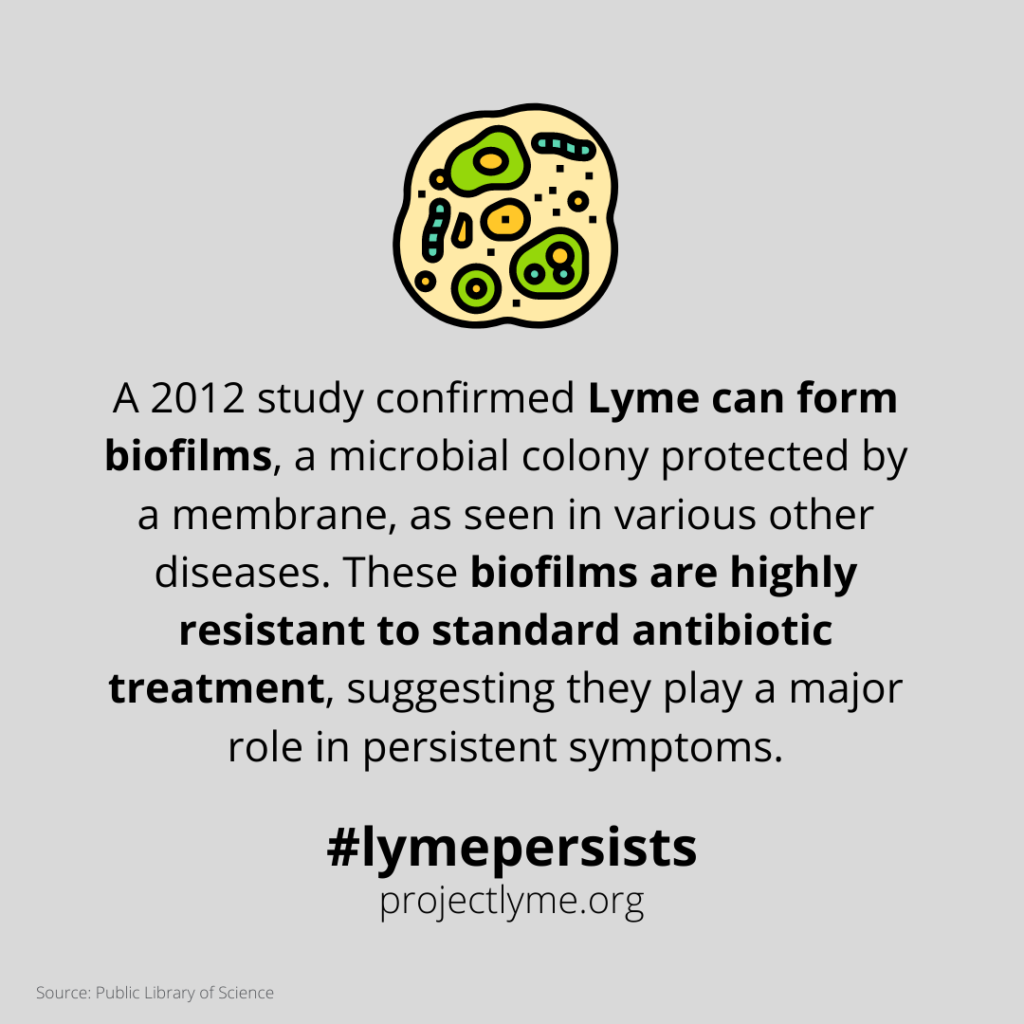LYME DISEASE FORMS
ANTIBIOTIC RESISTANT BIOFILMS


Borrelia burgdorferi, the causative agent of Lyme disease, has been proven to change forms (spirochetal, round body, and biofilm) both in vitro (test tube) and in vivo (in bodies) in response to environmental conditions. A 2012 study confirmed the long believed theory that B. burgdorferi can form biofilms.
Biofilms are complex, continuously rearranging microbial colonies covered with a protective layer to shield them from hostile environments, secreted by the individual cells within the biofilm. They can be induced by antibiotics and other extreme environmental conditions, but also begin to form when a bacterial population hits its peak, called the stationary phase. This occurs both in vitro and in a disseminated infection. Since their official discovery, B. burgdorferi biofilms have been found in humans in multiple studies, notably in vital organs in an autopsy and in vaginal fluid of a patient. Both patients in those studies had been treated with long courses of antibiotics, yet their symptoms and B. burgdorferi persisted.
The study that first confirmed B. burgdorferi’s ability to form biofilms also found that late stage biofilms predominantly consisted of round body forms of B. burgdorferi rather than spirochetes. Like biofilms, these round body forms have also been shown to be resistant to CDC recommended antibiotics.
Biofilms are well documented in other diseases, including other spirochetal (corkscrew shaped) bacteria like Treponema denticola and Leptospira spp. Biofilm formation by B. burgdorferi closely resembles that of other bacteria, as does the composition of the protective layer. Extracellular DNA (eDNA), is a major component of the protective layer of many bacterial biofilms. It maintains structural integrity and enhances resistance to environmental stressors; it has been shown to induce genes involved in antimicrobial resistance in the bacterium Pseudomonas aeruginosa.
In a 2018 study biofilms were transmitted via tick bite and caused more severe illness in mice and could not be resolved by any of the current CDC recommended antibiotics.
Since their discovery, B. burgdorferi biofilms have been shown to be highly resistant to standard antibiotic treatment recommended by the CDC, suggesting they play a major role in persistent symptoms.